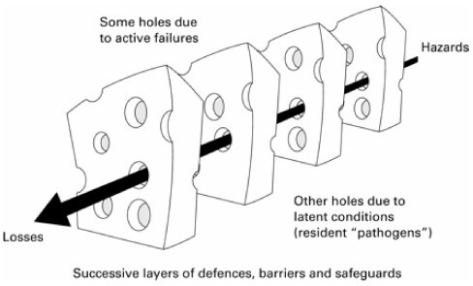Some scholars play a critical role in founding a whole field of study: Sigmund Freud, in psychology. Noam Chomsky, in linguistics. Albert Einstein, in modern physics. In the field of safety, Dr. James Reason has played such a role. In this field, no single name is better known.
Dr. Reason turns 80 today, and if you’re reading this, it’s possible that you owe your life to his ideas.
NTSB reports have frequently cited Dr. Reason’s work, and I personally quote him liberally in my talks to industry and safety stakeholders.
His contributions to safety have been influential not only in transportation and workplace safety, but also in fields as varied as healthcare, nuclear power, and fraud prevention.
His books include Human Error; Organizational Accidents; Managing the Risks of Organizational Accidents; Organizational Accidents Revisited; The Human Contribution: Unsafe Acts, Accidents, and Heroic Recoveries; and A Life in Error: From Little Slips to Big Disasters.
He views safety as a system, and accidents as the result of any individual’s mistakes in combination with other failings in the system. People are fallible, but that doesn’t make accidents inevitable.
Focusing on a safer system, instead of only an individual’s mistakes, can help diminish individual error (for example, through better training and procedures). More importantly, studying the system reveals much more of “what went wrong” – and will go wrong again if not corrected, because other individuals will make mistakes.
Dr. Reason came up with a handy analogy for his view, called the “Swiss Cheese Model of Accident Causation.” (Just say “Swiss Cheese Model” to a safety or risk management professional, and they’ll probably nod knowingly.)
In this model, layers of protection against an accident, each of which has weaknesses, are visualized as slices of cheese riddled with holes. An accident occurs when the weaknesses, or holes, align.

We’re all living in the Age of Reason. It’s a good age in which to live, one during which accidental deaths and injuries have been on the decline.
The continuous improvement of safety depends on safety professionals living with what Dr. Reason called a “chronic unease.” The paradox of safety is that the moment we think we’ve arrived, we introduce another hazard: complacency.
However, even in the chronically uneasy profession of safety, we find cause to celebrate every now and then. So, on that note, Happy 80th birthday to Professor Emeritus James Reason, on behalf of safety professionals everywhere—and on behalf of all those he’s saved, from every walk of life.

Thanks for recognizing a Giant in saving lives. We owe it to the next generations not to unlearn what Dr. Reason has taught us. Keep preaching the message.
I was lucky enough to be a postgraduate researcher attending his university classes in the late 80s, just as “Human Error” was being published with the cheese model.
His post-Rasmussen work helped me to understand the previously unexplained things that I experienced in pilot training and from reading accident reports.
Jim was the biggest influence on me becoming an aviation safety investigator, for which I am very grateful.